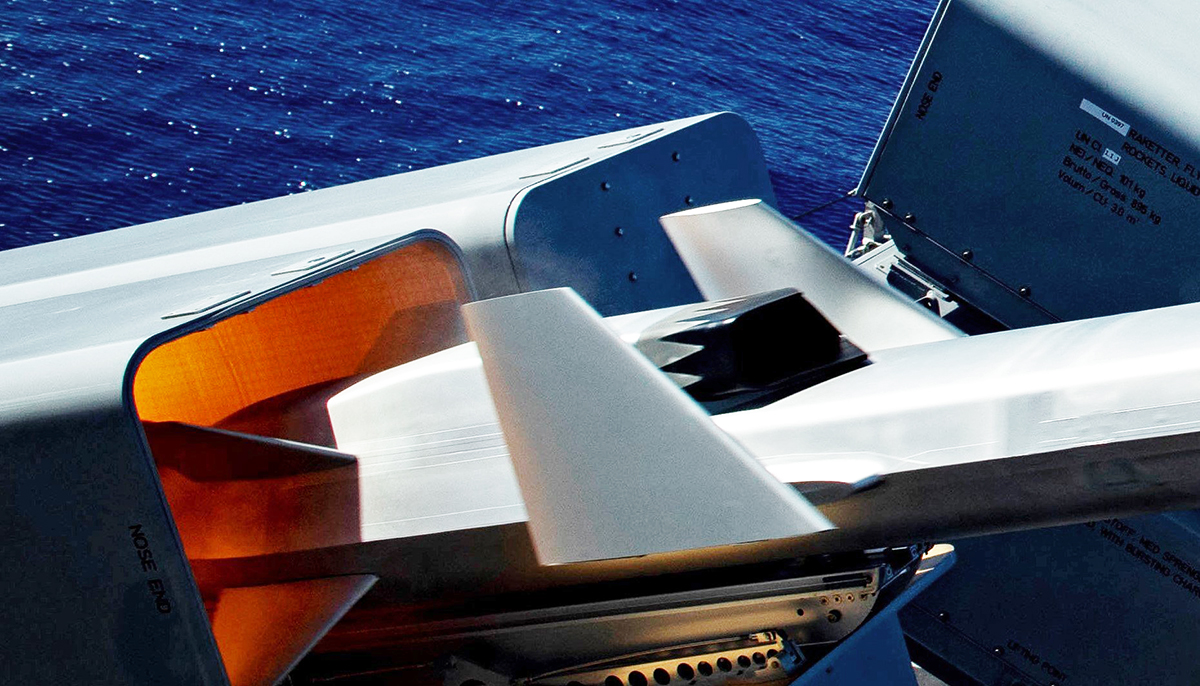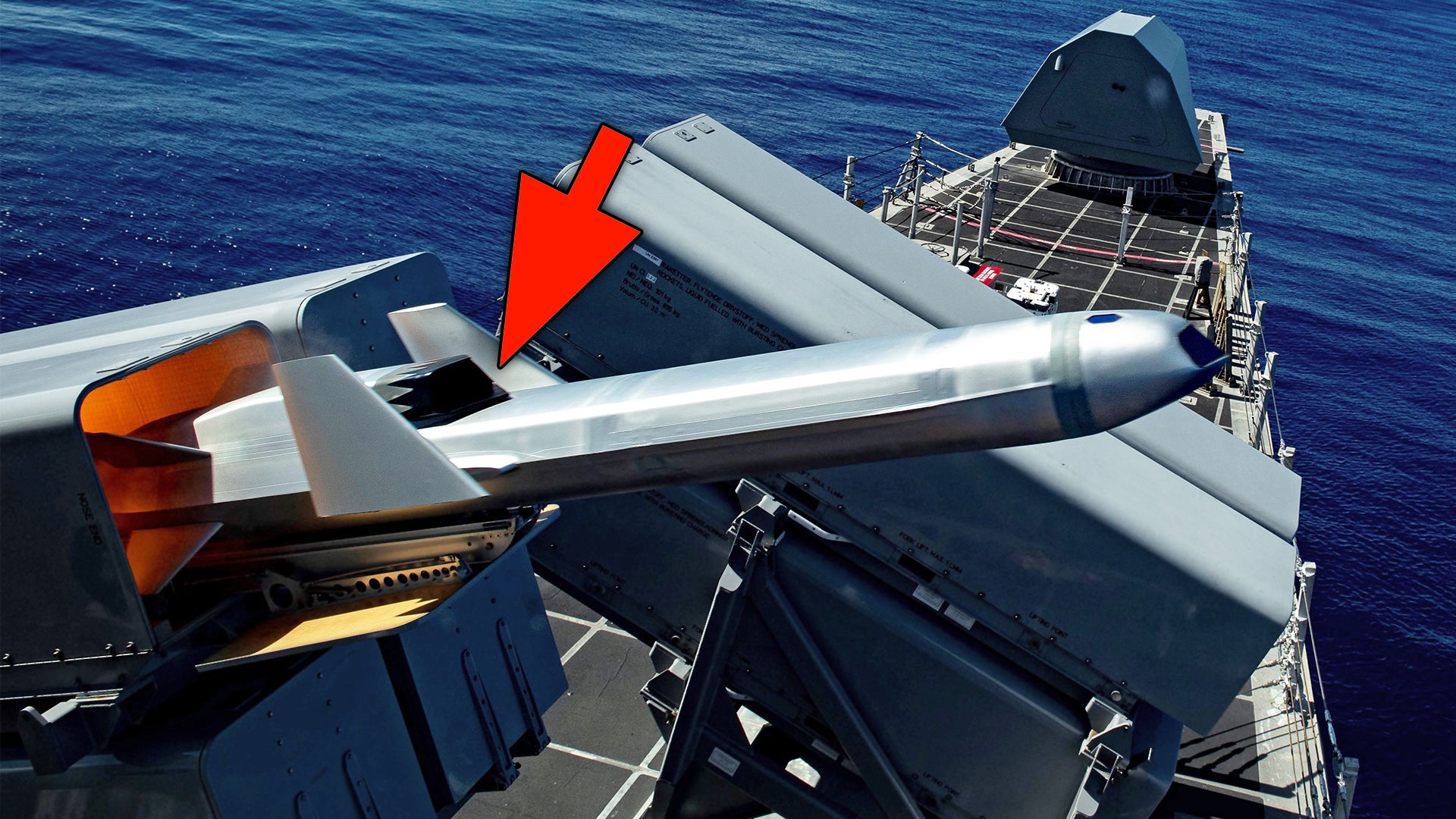The Independence class Littoral Combat Ship USS Gabrielle Giffords (LCS-10) is in the waters off Guam taking part in exercise Pacific Griffin, during which she fired off a Naval Strike Missile (NSM). This is a big deal considering giving the LCS more combat punch and a far longer kinetic reach has been a long time coming and the Naval Strike Missile is an incredibly capable and relevant weapon, as is its even more advanced cousin, the Joint Strike Missile. Images and video from the launch were interesting, but one image, in particular, serves as a unique example of one of the basic tenets of low-observable “stealth” design.
The Navy Strike Missile, which is a product of Norway’s Kongsberg Defense and Aerospace, was designed with reduced radar cross-section in mind, and especially from the head-on aspect from which it will barrel towards its maritime target. The missile uses passive imaging infrared, not radar, to locate and attack its prey. As a result, it doesn’t give away its presence by emitting RF radiation during its terminal phase of flight. It also isn’t susceptible to ‘soft kill’ electronic warfare tactics like jamming. In addition, its small radar cross-section makes it hard to spot on radar as it skims low and fast over the waves.
Generally speaking, warships depend on a missile’s radar emissions and its radar signature to detect it and defend against it. Lacking one of these things entirely and manifesting the other in very limited quantities, you can imagine that the Naval Strike Missile is one diabolical and deadly anti-ship cruise missile. Oh, it also has a secondary land-attack capability, too.

Beyond its faceted nose, trapezoidal airframe, and chined edges, the NSM achieves its low radar cross-section via the incorporation of composite structures. But just using composites for a missile’s wings and tail surfaces does not provide a high degree of low observability in itself. Using composites creatively along with underlying radar defeating shapes and structures does. It also happens to be a major low-observable trick that dates back to the dawn of stealth technology.
You can see a great example of this type of stealthy design application on the intake of the NSM. Note the sawtooth edges surrounding the intake. That is a proven way to deflect radar energy away from its source and especially from the head-on aspect, which is where the most threatening radar systems will be pointing at the NSM as it makes its kamikaze run at its naval target. But that type of sawtooth structure isn’t the most conducive for an air inlet design, or for airframe design in general. The air inlet must provide consistent and even airflow to the jet engine buried at the end of its serpentine duct—also another stealth design trick.

So, a seamless composite fairing that is translucent to the radar bands that are most likely to threaten such a missile is placed over the sawtooth edge. This provides the best of both worlds—low observability via a sawtooth leading edge, while the air doesn’t know the difference between a composite structure or a metallic one, and the radars that matter most don’t even “see” the fairing at all. It works very much like a composite radome on the nose of an aircraft, providing an aerodynamic necessity without being opaque to the radar’s beams.
While we are most accustomed to hearing about radar-absorbent coatings on the skin of stealthy aircraft, these composite structures may be left without those coatings, letting the RF energy in to be dealt with via the structures and material it conceals, instead of attenuating it just by surface coatings and shape.

This type of arrangement, and far more advanced ones, are used in low-observable aircraft like the F-117, B-2, F-22, F-35, and J-20. For instance, the frontal area of a trapezoidal air inlet on a fighter jet may actually be a large composite structure that is invisible to certain radar frequencies, while concealing complex radar defeating structures and material underneath. A long and smooth wing leading edge may actually conceal highly intricate geometric structures that work as radar baffles and are buried below a radar translucent composite outer skin and a layer of radar-absorbing filler. We saw a glimpse of this recently when an F-22 with crumbling skin was flown to an air show. You can read my exclusive writeup on this unique peek into the shadowy world of low-observable design by clicking here.


Sometimes people superficially conclude there are ‘radar traps’ in certain areas of stealth aircraft just by looking at them. But what they may not realize is that even though a certain airframe component looks solid and opaque, it isn’t to radar and structures are concealed below them that deflect and attenuate radar returns. This ability to build almost two different airframes in one—one that is an aerodynamic and stealthy shaped outer shell of sorts, and one that sits below the skin with areas that provide massive decreases in radar reflectivity where it’s needed most, is truly fascinating. The fact that this is able to happen at all also creates the possibility that low-observable design teams and aerodynamic design teams can get to a point where both are satisfied while working together on a high-performance stealth aircraft.

The big takeaway here is that the blended relationship between these substructures and outer skins are usually not apparent when viewing stealthy aircraft visually. Their smooth skin can actually make stealthy aircraft look eerily simple in appearance, but an entirely different world lies beneath, and especially in key areas. This reality makes stealth aircraft even more of a technological accomplishment than they already appear to be, especially considering some of these designs are meant to be battered ruthlessly and heated and cooled for thousands of hours as they careen through the air under high G forces and rip across the sky at supersonic speeds.
So, just remember, when it comes to stealthy aircraft and missiles, they are truly so much more than what meets the eye.
Hat tip to @divert_thruster on Twitter for posting the Navy shots
Contact the author: Tyler@thedrive.com
